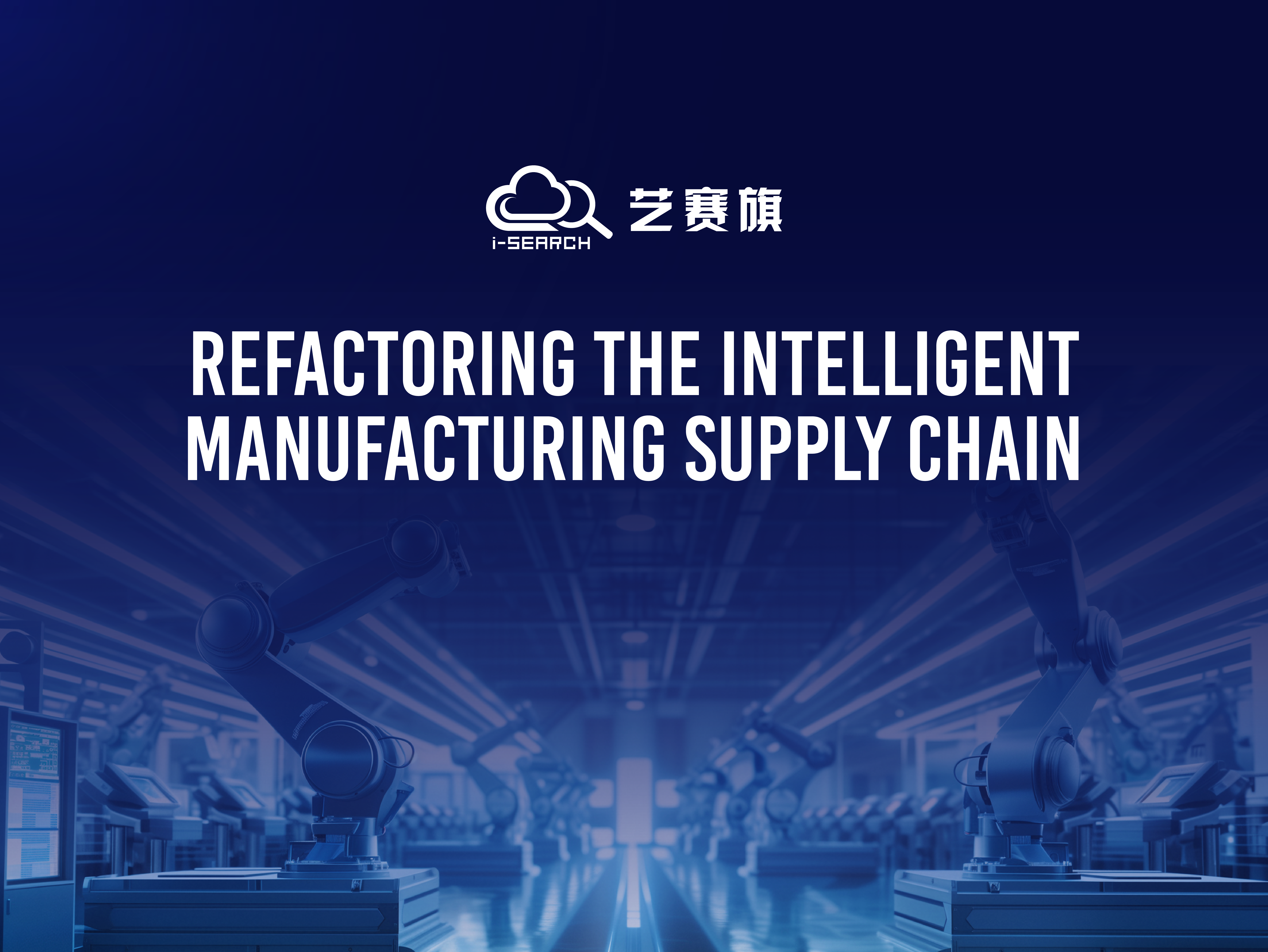In the operational center of manufacturing enterprises, the supply chain is like a precise link, connecting the entire process of procurement, production, logistics, and customer docking. Its smoothness is directly related to the accuracy of cost control, the speed of order delivery, and even the responsiveness of enterprises in the market - an efficient supply chain can ensure that raw materials arrive at the production line on time and products are quickly delivered to customers; Once the process is stuck or data is disrupted, it often means internal manpower consumption, delayed delivery, and even missing out on market opportunities.
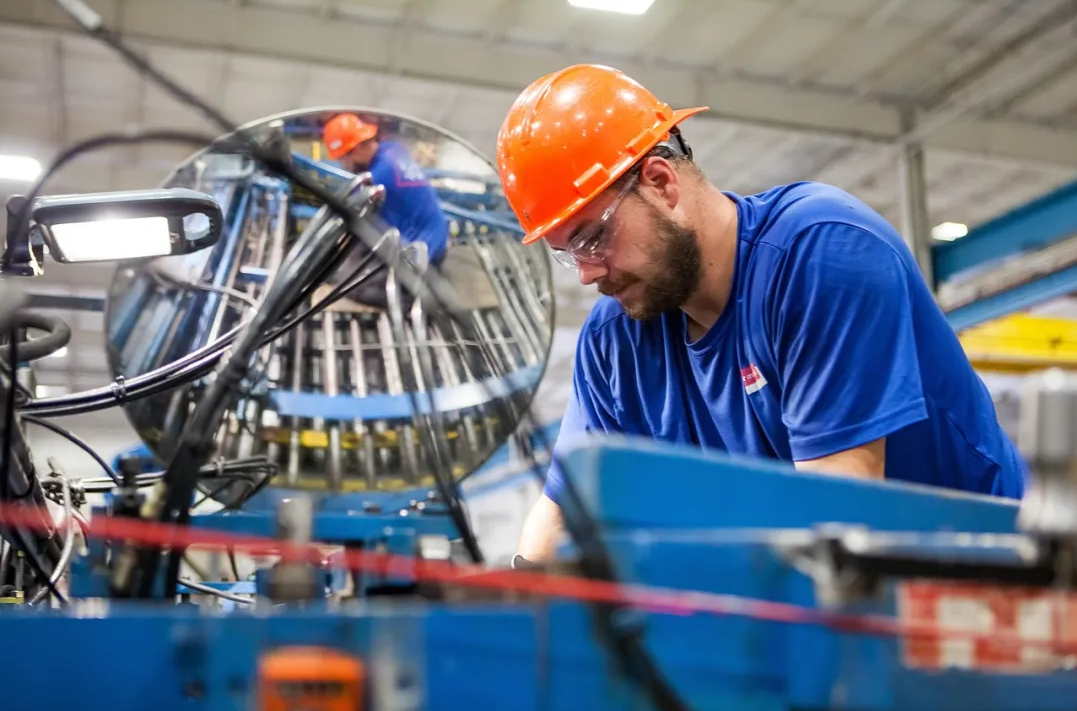
In actual supply chain operations, many enterprises face similar challenges:
The procurement team needs to operate both the procurement platform and the production system simultaneously, frequently switching interfaces and manually checking approval status, which limits the efficiency of order processing;
Business department employees need to connect with hundreds of customer platforms every day, investing a lot of time in order, reconciliation, and invoice management to handle repetitive work;
The production department manually processes thousands of inventory data every day, which takes nearly an hour to export and generate reports, and the accuracy of the data also faces challenges.
These seemingly isolated links are actually common efficiency bottlenecks in the supply chain. And when these checkpoints are cleared one by one, it not only brings about smooth processes, but also a leap in the competitiveness of the enterprise. Next, let's take a look at how these enterprises break through bottlenecks and achieve a qualitative change in supply chain efficiency.
1.
purchasing process
From 'scheduled processing' to 'instant response'
There is no connection between SKF's procurement platform and production management system, so after placing an order on the procurement platform, the purchaser needs to manually log in to the production management system to check the approval results and confirm that the order status is normal before proceeding with subsequent actions such as payment and warehousing. This mode of "people transmitting data in the middle" results in order processing relying solely on manual scheduled operations, making it difficult to guarantee timeliness.
Nowadays, I-Search helps SKF to automatically retrieve approved orders from the production management system and synchronize them to the procurement platform for review. If the order information matches, it will be automatically confirmed and pushed to the next stage. The previous' timed window 'has been broken, and order processing has achieved real-time response 24/7. Purchasing personnel are liberated from repetitive checks and focus on more core supplier management and strategy development.
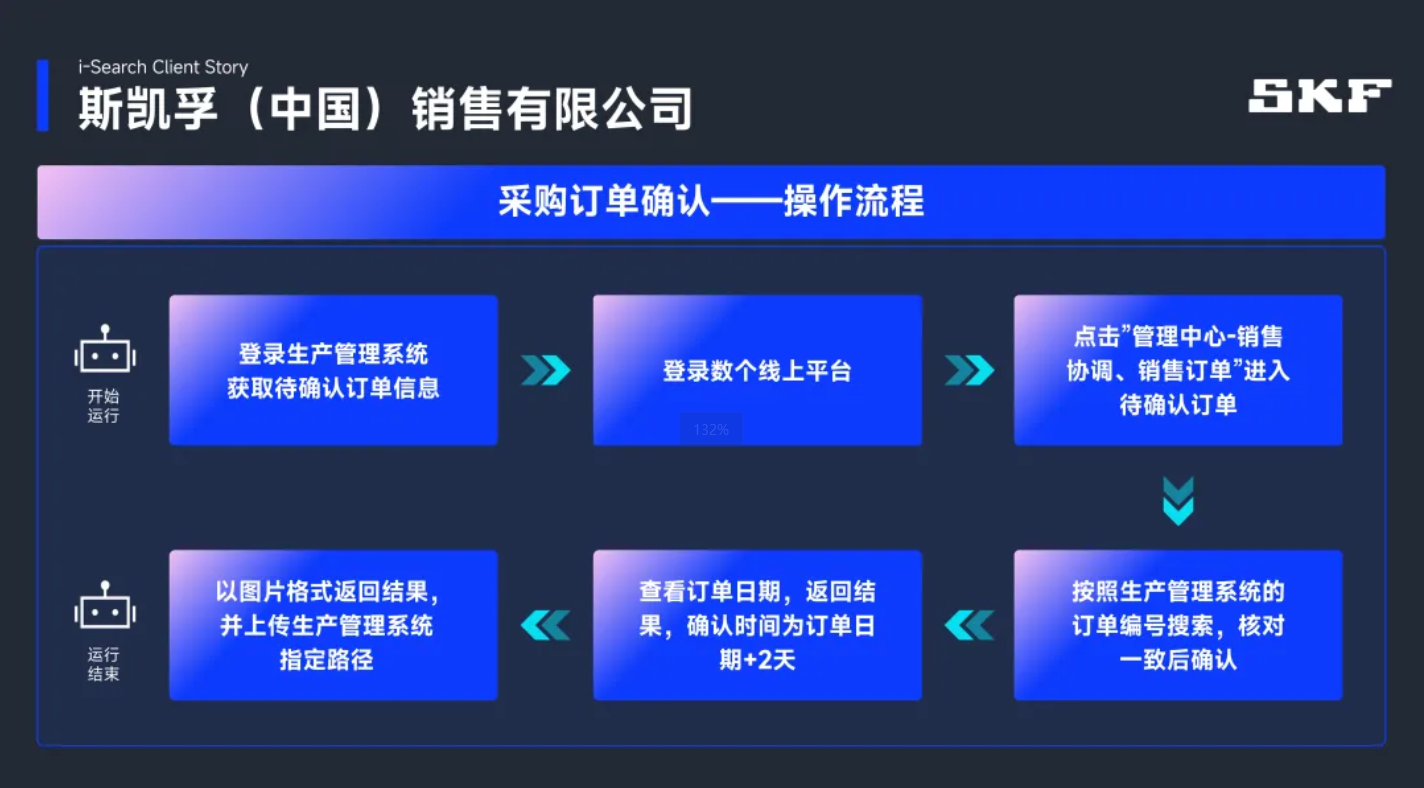
2.
Multi platform order management
From 'repetitive operations' to' intelligent collaboration '
Kunshan Maoshun's business department needs to connect with 110 different customer platforms, from order reception to reconciliation, invoice management, and clearing, each link requires manual switching between different systems, which is not only time-consuming but also prone to errors due to operational differences.
By introducing RPA, the system can automatically log in to various customer platforms to complete the entire process of order receiving, data comparison, invoice matching, and clearing accounts. Manual review is only required for the abnormal information marked by the system, and the rest of the steps are completed independently by the system. This transformation has transformed the team from a "mechanical executor" to a "process monitor", with an 80% increase in daily processing efficiency and almost zero error rate.
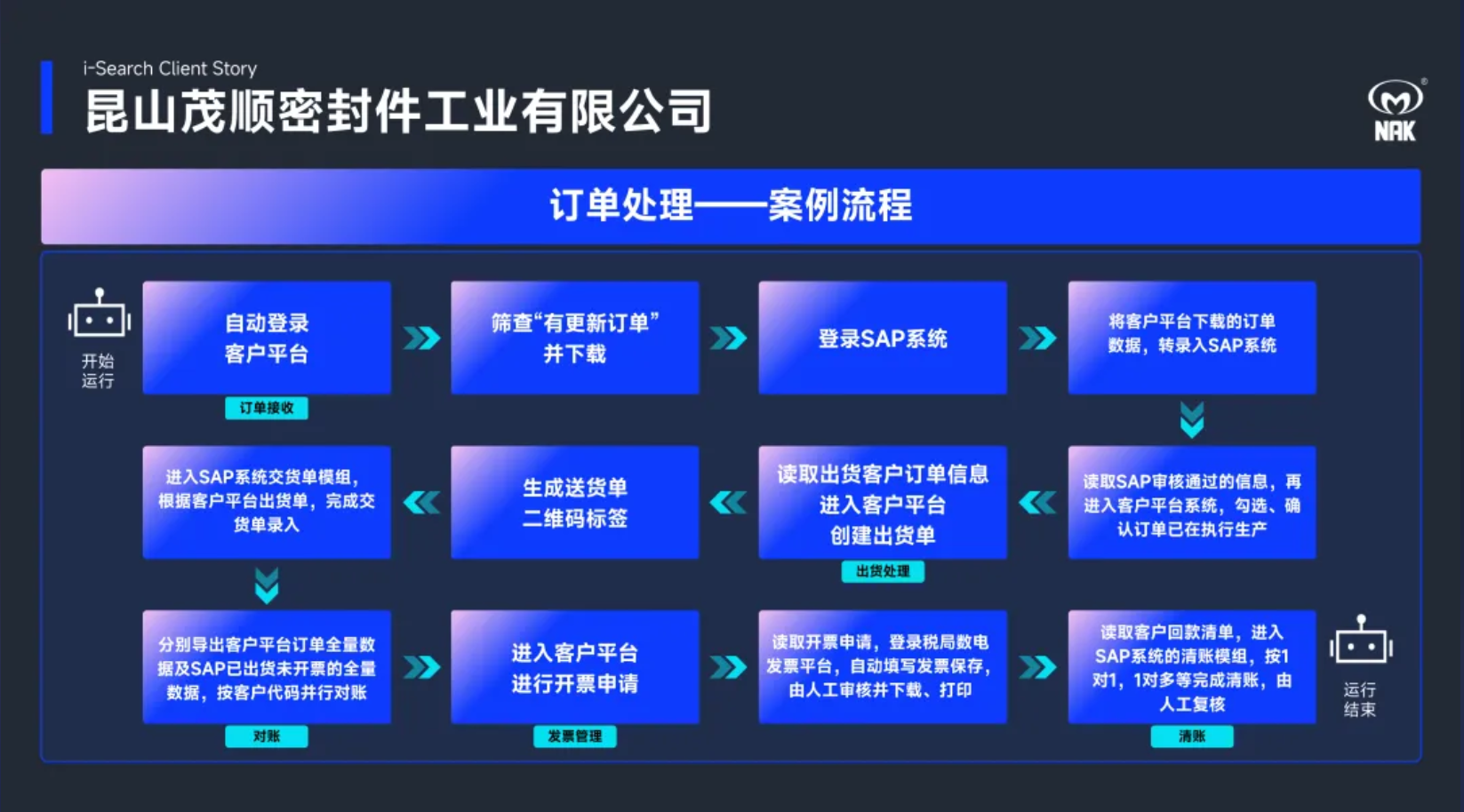
3.
Inventory data processing
From 'manual integration' to 'second level generation'
The product manufacturing department of Wuxi Bainian Tong needs to log in to the MES system multiple times a day to export the "Logistics Inventory Batch Details", extract key data from it, manually filter, verify, sort over 1000 records, merge and split them into different reports, and finally generate the "Material Inventory Table" for business analysis. The entire process takes 50 minutes for a single operation, and the more complex the data, the higher the risk of errors.
Now, with the application of I-Search RPA solution, data can be automatically exported, key information can be extracted according to rules, report splitting and merging can be completed, and the final "material inventory table" can be automatically stored on a shared drive. The single operation time has been reduced from 50 minutes to 5 minutes, with an accuracy rate of 100%. Business personnel no longer need to spend energy organizing data, and can quickly determine inventory status based on real-time reports, ensuring smooth connection between production and sales.
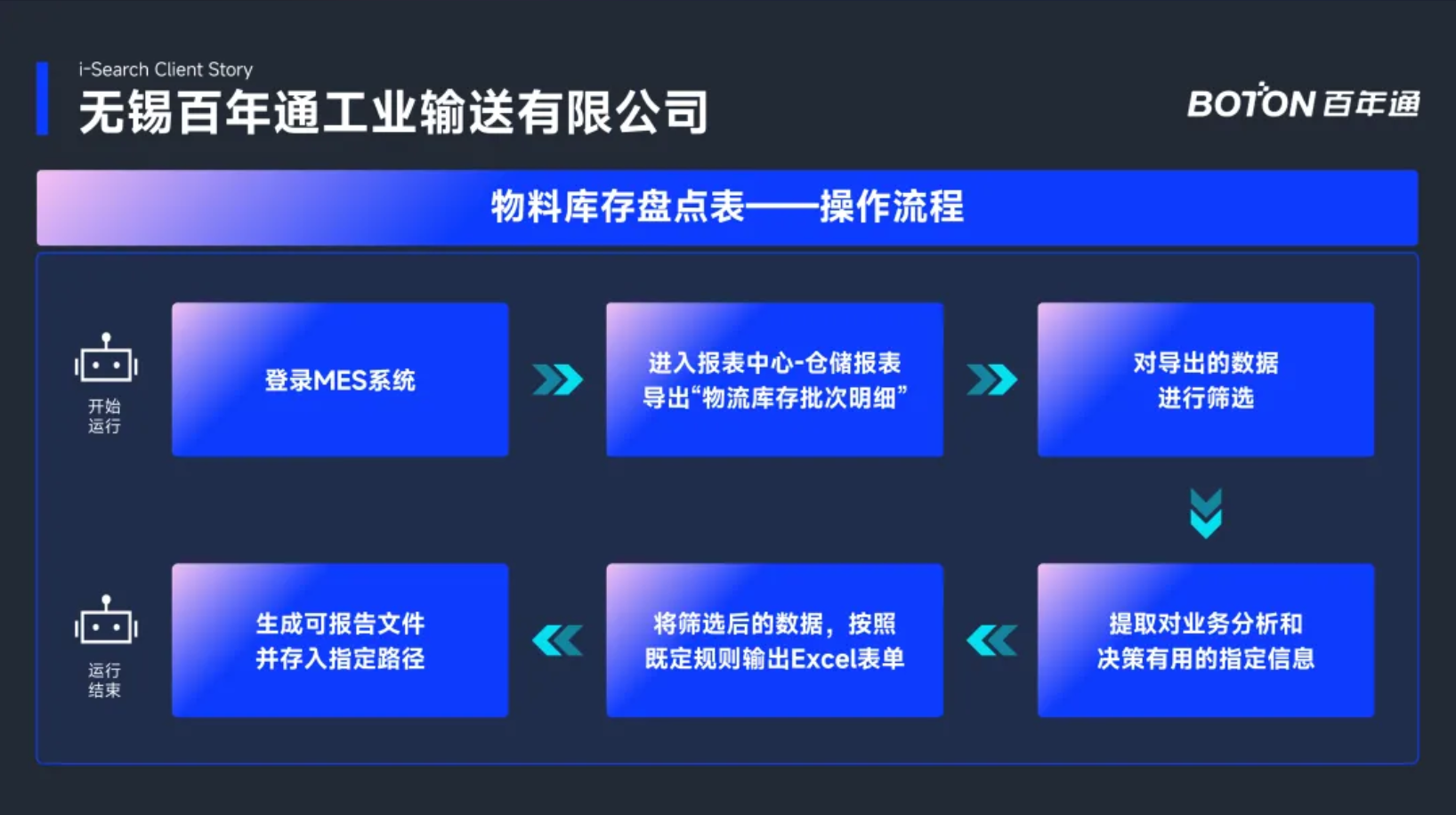
The core of supply chain competition lies in process efficiency and collaborative capabilities. By eliminating implicit costs in procurement, orders, inventory, and other processes, enterprises can seize the opportunity in intelligent manufacturing. When the automation of a single phase is mature, the supply chain is moving towards deeper collaboration: for example, the purchase demand is predicted through historical data, and the inventory is adjusted in advance; By monitoring logistics nodes in real-time, proactively alerting for anomalies; Even through the integration of full chain data, it can achieve a "one click trigger" from customer orders to production plans. The evolution of "proactive prediction" is the core competitiveness of the supply chain in the era of intelligent manufacturing.

If your enterprise also faces problems such as cumbersome system integration, excessive repetitive operations, and inefficient data processing in supply chain management, you may explore more intelligent process optimization solutions to make technology the key to breaking bottlenecks.






 Enterprise Platform
Enterprise Platform
 Discovery and Evaluation
Discovery and Evaluation
 Automation
Automation
 Industry Solutions
Industry Solutions
 General Solutions
General Solutions
 Partnership
Partnership
 Ecosystem Alliance
Ecosystem Alliance
 Consulting Services
Consulting Services
 Community
Community
 Company Introduction
Company Introduction
 News and Updates
News and Updates
 Contact Us
Contact Us
